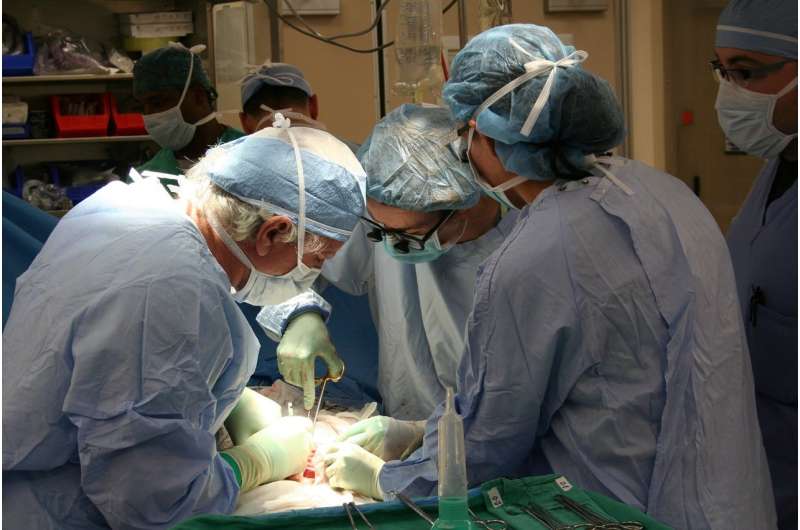arsenal fc somalian fans


Lifesaving living-donor liver transplants are out of reach for patients in several demographics according to a new study conducted by Keck School of Medicine of USC faculty. Researchers found that patients who had lower incomes and education levels, were on public health insurance, or were nonwhite were more likely to die while on the transplant wait list and less able to access live-donor organs. Juliet Emamaullee, retin a micro without prescription MD, Ph.D., an assistant professor of clinical surgery at the Keck School, was the lead investigator on this study that quantified a health disparity that Keck Medicine of USC surgeons had long known about.
“We had noticed in our living-donor liver transplant program that patients with limited means often struggled to make it through our living donor process,” said Emamaullee, who is also a transplant surgeon with Keck Medicine.
To become a living donor, patients must be able to take time off from work before surgery for testing as well as four weeks or more after surgery for recovery. Donors also need a support network of people who can take time off to help care for them while they recover, and may face out-of-pocket expenses that average around $2,000.
In the state of California, patients who take time off to donate an organ are guaranteed a job when they get back, but they aren’t guaranteed pay during that time. Many people simply can’t take three weeks or more of unpaid leave.
The takeaway is that even people who might desperately want to donate an organ to a loved one may be unable to do so.
“It just becomes logistically so difficult for them,” Emamaullee explained.
To document this disparity, the study looked at patients who receive public medical insurance and who are on the liver transplant waiting list at medical centers that have active living donor programs for liver transplants. Since the main criterion for public medical insurance assistance is low income, public health insurance was a useful surrogate marker.
The team examined the rate of death while on the waiting list and at the rate of living-donor liver transplants by type of insurance. They found that patients who have public health insurance are more likely to die while on the waiting list and less likely to complete the living-donor process.
This is no small disparity. Another recent study led by Emamaullee showed that living donor transplantation had crucial health benefits. Living-donor liver transplant recipients have a better chance at long-term survival, their transplants last longer, they have fewer rejection episodes, and they can have their procedures while they are healthier and their bodies are better able to tolerate major surgery.
Emamaullee pointed out that the rate of people going on public insurance has increased dramatically during the COVID-19 pandemic, which means that a larger portion of the population will have live-donor liver transplants out of reach.
“Unless we do something to change how people on public health insurance go through this process, we’ll continue to have a serious disparity,” she said. “People on public insurance simply may not be able to get their best transplant option.”
Keck Medicine runs the only active living-donor liver transplant program in Southern California, and caregivers at the USC Transplant Institute have been increase equitable access to living-donor transplants for quite some time. Emamaullee hopes that her study will allow transplant and hepatology physicians to advocate for better public policy regarding living organ donors, including financial assistance.
USC Transplant Institute is leading a national consortium of live-donor centers called the North American Living Liver Donation Innovation Group, for which Emamaullee serves as chair. “Now that we have the data, we as a community can bring this issue to the forefront,” she explained. The group hopes to set up a program for additional financial coverage for liver donors who are on public insurance, analogous to the Donor Shield program for kidney donors. This new study will be a key part of making their case.
“We have lived through this and see our patients go through this every day. Sometimes you need the numbers to push people to make a policy change,” Emamaullee explained. “That’s why we did the study.”
Source: Read Full Article